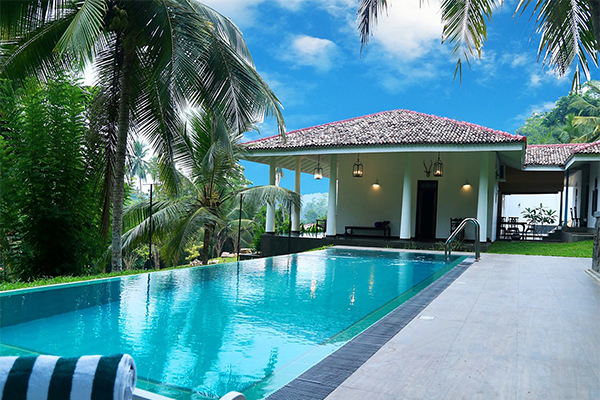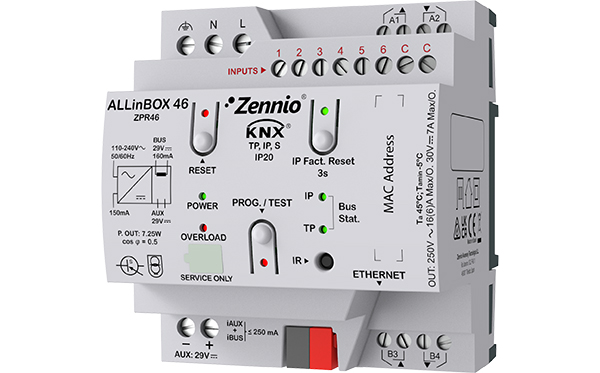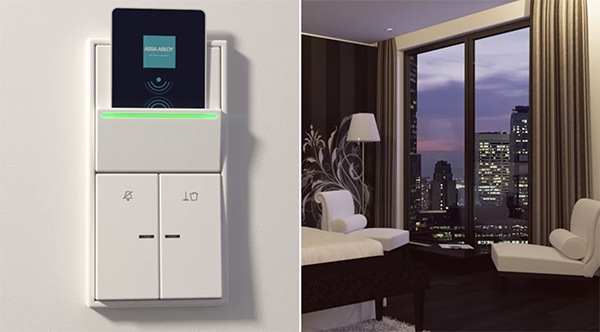
Simon Buddle explains how KNX automation can make significant overall cost-savings for hotels and improve their profitability.
Hotels come in different shapes and sizes. Form the slightly grumpy seaside B&B to the most elegant a swanky five-star city type. I’m more of a tent and stinky dog sort of holiday person, but for those who like the creature comforts that a hotel offers, it takes a lot of behind-the-scenes work to build and run such establishments.

Many say that a hotel must be at least as comfortable as home. That means a good bed, comfortable environment, well-stocked bar, and quality food. But the hotel must provide this not for one person, but typically for hundreds. Add to this the need to work on incredibly small margins and we begin to understand that efficiency is a key ingredient to the success of any hotel business. Staff, food procurement, linen, towels (let’s not change them every day), all form part of the balancing act that keeps the hotel in profit, and none more so than the systems that control the environment, lighting, front-of-house, back-of-house and guest rooms.
Small savings mount up
Many years ago I worked on a hotel project in south London where the supplier of the control system actively turned down each room’s heating/cooling by 2 degrees from 11pm to 6am. The guests weren’t aware as they were usually asleep. This was a sales pitch that demonstrated a saving per room per day. It was a small amount as I recall, but when multiplied by the number of rooms annually, it made a significant saving for the hotel. That simple function requires significant infrastructure and technology to make it viable and produce the cost savings, and back then, it was a bespoke and proprietary software package that only that company supplied, for a fee.
Hotels are broadly split into guest rooms, front-of-house including restaurants, bars, foyers etc, and back-of-house including kitchens, offices, plantrooms etc. Guest rooms are mini versions of a house. They require lighting, heating, cooling, blinds, and access control, but on a tiny scale. Whether it be ten rooms, fifty or three hundred, they are all fundamentally the same. They may vary in shape or style, have a couple of extra lighting circuits and/or switches, but nothing that a KNX system can’t handle easily. In fact, companies such as Jung and Zennio have product specifically designed and used for exactly this purpose.

Occupancy
To make the systems energy efficient, we need to know whether rooms are occupied or not. This can be achieved with the use of a couple of simple devices, namely the access card reader and/or an internal PIR. KNX can do this; tick. With card readers, it is also straightforward to understand who is in a room at any given moment. Guests get full use of the room whilst staff can only access lights and not environmental controls. Anyone leaving a room with the AC on full blast would find it automatically switched off after a timeout period, thus saving energy.

Front of house areas can also benefit from occupancy sensing as well as sensors for temperature, humidity, and CO2. Altering the speed or volume air change for MVHRs and AHUs makes for a very energy efficient way of keeping the hotel’s spaces comfortable for guests. There’s little point in running the AHUs at full tilt in an empty restaurant or bar. Likewise, when full, they may be required to run at 100% to keep the air cool and fresh. That’s all doable with a KNX solution.
Facilities management
One of the most critical aspects of any hotel is ensuring rooms are available for guests, i.e. that they are sellable. Connecting all the rooms to a UI with a messaging platform or email system that provides the facilities team with accurate up-to-date information on the status of rooms, faults, energy usage etc, is vital in the struggle to keep rooms open and available. KNX, of course, easily integrates all of these requirements without the need to interface with additional third-party controls or APIs (for API read ‘expensive and time-consuming interface writing’).
For many hotels, DALI is the obvious choice for lighting. The fact that we can get fault status and provide the facilities team with an easy way to test emergency lighting, ticks yet more boxes for KNX and its plethora of solutions. Rather than waiting for a service engineer to find a light out, they can be sent to the light armed with the correct lighting driver as soon as the fault occurs. The larger the hotel, the greater the benefit.
We do need to consider fire strategies and other emergency procedures for opening doors, shutting down plant and the like, but these are purely input/output signals that we use to activate a set of controls based on the written strategy given to us.
Conclusion
KNX provides a single non-proprietary solution for the rooms, front-of-house and back-of-house infrastructure, all the way to the plant. There is no need for multiple system types and their respective intercommunication interfaces, for which we should read possible points of failure. Using a KNX backbone across the front-of-house and then linking that to the GRMS (Guest Room Management System) creates a single and seamless solution for the hotel. Using one company across multiple areas brings its own cost savings as well as benefits for communications and connectivity.
The simplicity of KNX, combined with its scalability and robustness, make it perfect for the hospitality sector which is a smaller version of an MDU.
Simon Buddle CEng MIET, is a consultant for Future Ready Homes, a specialist in BMS and ELV services system design.












